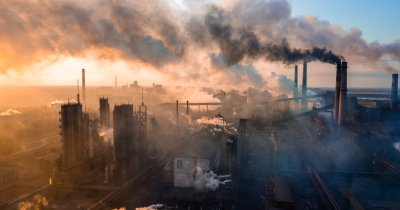According to The Guardian, the loss of the ozone layer would mean that the world would be exposed to harmful ultraviolet light coming from the Sun.
United Nations experts believe that our planet's protective layer should be fully recovered on most areas, except the polar regions, before 2040, thanks to the action taken by governments.
The Arctic and Antarctic areas should have their ozone layers healed back by 2045 and 2066, respectively.
Scientists pointed out that Earth's protective layer could be in danger ever since the 1980s and the Montreal protocol in 1989 aimed to help recovering it by phasing out 99% of ozone-depleting chemicals, such as chlorofluorocarbons (CFCs) that were used as refrigerants and solvents.
Petteri Taalas, secretary-general of the World Meteorological Organization, said that "our success in phasing out ozone-eating chemicals shows us what can and must be done as a matter of urgency to transition away from fossil fuels, reduce greenhouse gases and so limit temperature increase."
Despite the fact that the measures taken at the Montreal protocol were effective in reducing the use of chemicals that damage our planet's protective layer, an increase of CFC usage was detected in China in 2018, but the issue was remediated quickly.
Researchers warn that, although swift action was taken to prevent further chemicals from reaching the atmosphere, they can take as much as a century before fully disappear.
David Fahey, a scientist at National Oceanic and Atmospheric Administration, said that "It’s a bit like waiting for paint to dry, you just have to wait for nature to do its thing and flush out these chemicals."
CO2, still the greater enemy to our climate
Still, he believes that the big threat when it comes to climate change and the rising of temperatures comes from carbon dioxide, which is released by most people around the world, not just big companies.
"CO2 is another order of magnitude when it comes to its longevity, which is sobering. Getting every person on the planet to stop burning fossil fuels is a vastly different challenge."
Moreover, some researchers from the US government are looking to release large amounts of sulphur into the atmosphere with the purpose to reflect sunlight and thus, reduce global temperatures.
Fahey warned about the fact that, while this practice could have some benefits, it's important to take into account that it could be just as damaging to the environment. This is because sulphur itself can be thinning the ozone layer, although just by 10% and it would not mean creating new holes in the protective layer.
"These sort of climate interventions are touchy subjects because they are a tangled ball of ethics and governance, rather than just science", he added.
 Mihai - Cristian Ioniță
Mihai - Cristian Ioniță












Any thoughts?